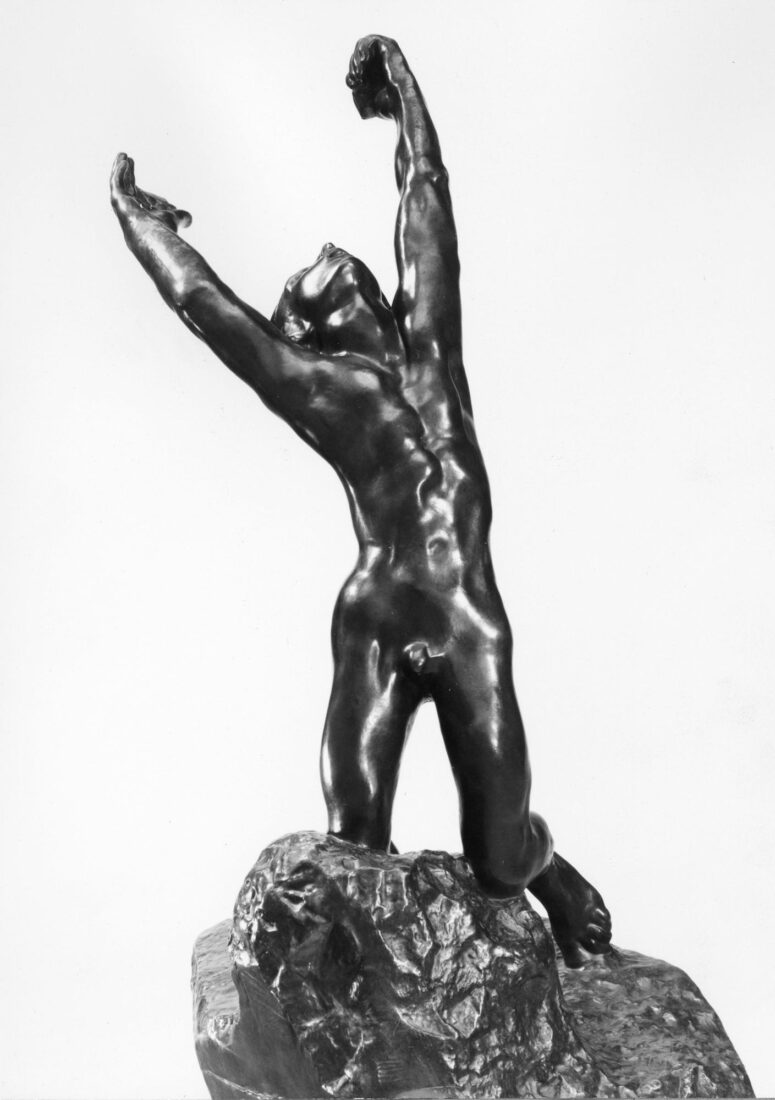We use cookies to make our site work properly, to personalize content and ads, to provide social media features and to analyze our traffic. We also share information about how you use our site with our social media, advertising and analytics partners. Read the Cookies Policy.

The Prodigal Son, c. 1884
Bronze, 139 x 66 x 97 cm
Purchased by the Odysseas Fokas bequest and the contribution of Vasilis Goulandris
The subject of this piece is taken from the parable of the Prodigal Son as narrated in the Gospel according to Luke. The younger of two sons asked his father to divvy up his fortune and give him his share. The son then took the money, left home and squandered it in a foreign town, where he succumbed to hunger. Unable to sustain himself, he recalled that the slaves in his father’s household were living better that he was. So, repentant, he returned home, entreating his father to take him in as a slave, saying, “Father I have sinned against heaven and before you, and I no longer deserve to call myself your son.” His father, however, welcomed him with open arms and restored him to his rightful place in the home.
The moment of the Son-Man’s apology to the Father-God is depicted in a stance of intense supplication, with the figure’s torso straining backward and hands upraised towards heaven.
This piece synopsizes Rodin’s artistic ideals. Opposed to the imitation of reality pursued by the conservative academic artists of his day, he created powerfully expressive, deeply symbolic sculptural forms through the use of poses with excessive physical tension. The body here is muscular and sinewy, modeled with deep groves and incidents that heighten the sensation of agony, passion and desperation. Regarding this piece, Rodin confessed to Paul Gsell (Auguste Rodin on Art and Artists, p. 11) that he emphasized the muscle mass to express misery and in some places exaggerated the stretched tendons to make the outburst of remorse and entreaty more obvious.
Although this scene involves at least two persons, the son and the father, the presence of the latter is intangible, implied only by the movement of the son’s body and upraised hands.
This piece was shown for the first time in 1894 as The Boy of the Century at the Salon organized by the newspaper La Plume. However, it was exhibited with its current title at a pavilion of Rodin’s works at the 1900 Exposition Universelle in Paris.
The source of this figure is La Porte de l’Enfer (The Gates of Hell), from which Rodin isolated and developed a number of subsequent images. He frequently used variations of the same figure in different images, giving them different significance. The Prodigal Son comes from Fugit Amor, a group on the right section of the Gates. This monumental work was commissioned for the entrance of the future Musee des Arts Decoratif in Paris, but was never completed. Rodin nevertheless continued to work on it until his death, and its imagery resulted in a number of free-standing sculptures.

